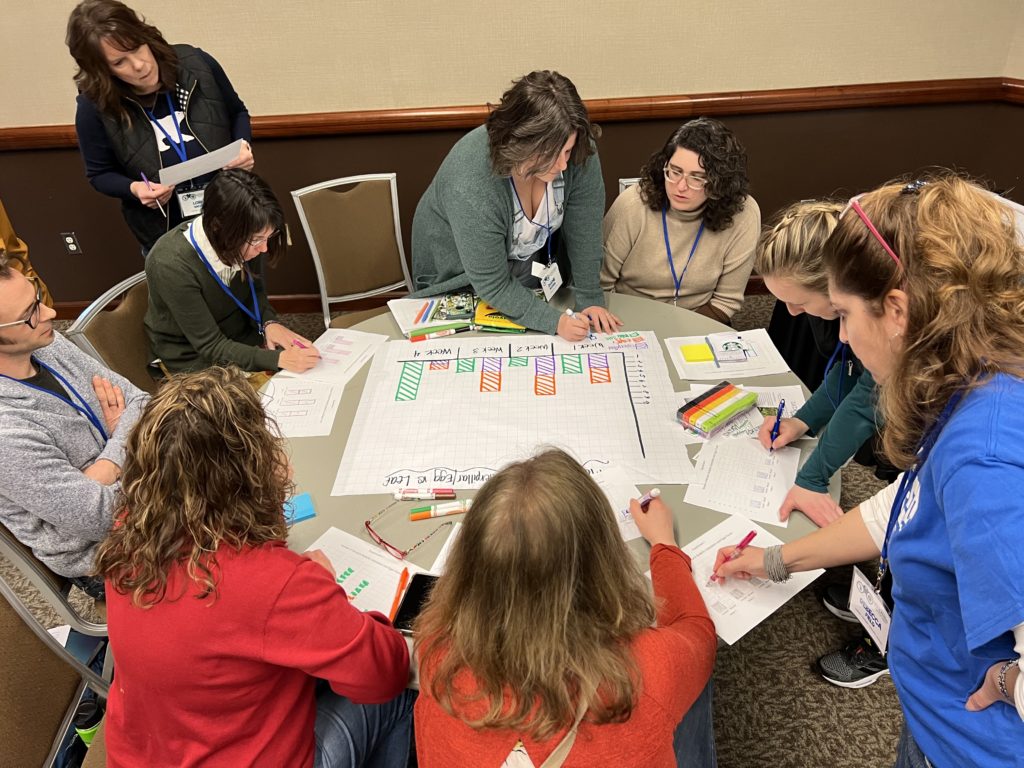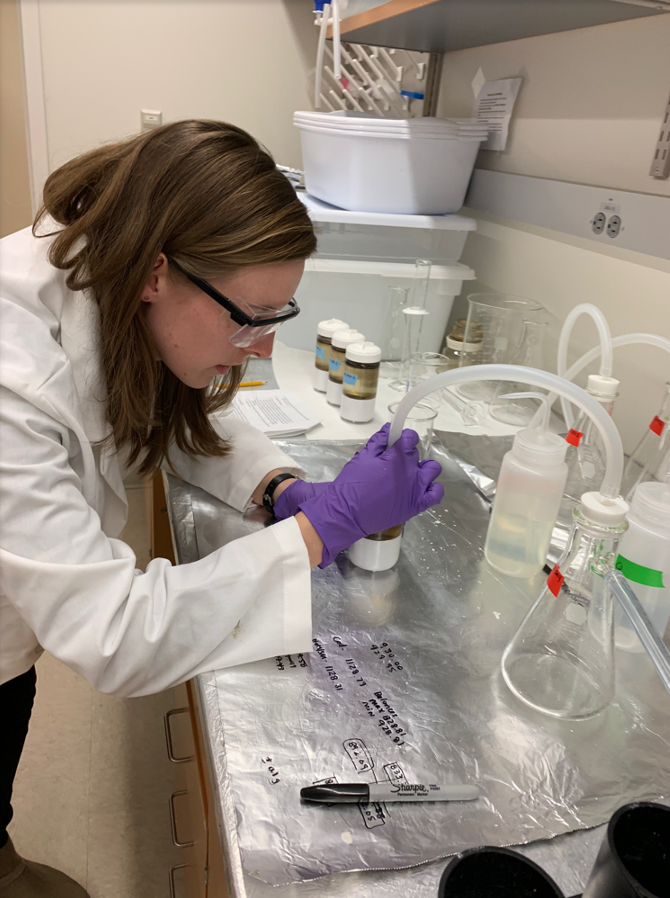The activities are as follows:
- Teacher Guide
- Student activity, Graph Type A, Level 3
- Student activity, Graph Type B, Level 3
- Student activity, Graph Type C, Level 3
- Grading Rubric
Fire plays a crucial role for prairie habitats across North America. Native Americans have long observed that lush and green pastures grow after a wildfire. In many areas, it is part of current and historical native culture to imitate this natural process by deliberately burning the prairie in a controlled way. This land management practice has many benefits, such as helping native grasses form seeds, thinning out plants, and enhancing habitat for prairie animals. By using controlled fires to cultivate these areas, Native Americans increase the availability of food and connect to the environment and their cultural traditions.
Some land management agencies plan prescribed burns to increase the health of prairie ecosystems. However, fire is still suppressed in many North American prairies due to the possible damage to human development. In these areas, scientists have observed that fire suppression contributes to local plant species extinctions, but we do not know why.
Stuart is a scientist interested in how fire can help prairie plants. In the late 1990s, Stuart was in central Minnesota searching for prairie plants in the Echinacea genus. The prairie was ablaze with flowers, so he had no difficulty finding plenty of plants. He tagged each plant so that he could study them again in the future. However, when he returned the following year, the field had almost no flowers! He kept returning to this same field. A few years later he found the site was again filled with flowers. That year there had been a prairie fire. Visually seeing the impacts of fire on the landscape is a memory he will not forget.
Stuart became interested in learning more about how fire affects the reproduction of native prairie plants. He knew that Echinacea plants grow in many places, but they have a hard time making seeds. This genus cannot self-pollinate, meaning they must be fertilized with pollen from a genetically different plant. Echinacea plants are also dependent on insects, such as bees, to pollinate them.
In 1996, a research team started collecting data on Echinacea plants in a large research site in Minnesota. This prairie site had a schedule for prescribed burns, or controlled fires that are started by experts to manage the land. These burns would happen every 4-6 years during the spring.
The team established a set of plot locations that they visited each summer. They searched for and mapped the location of all flowering Echinacea plants within these plots. They took measurements on each Echinacea plant – whether it was flowering, and the distance to its second closest Echinacea neighbor.
Stuart decided to take a new look at this long-term dataset. He had two ideas for how fire might be helping Echinacea plants. First, fire might help all the plants get on the same schedule and make flowers at the same time. This synchrony, or flowering at the same time, could help pollen get from one flower to another. Second, fire might remove competing plants from the area, opening up bare ground for new seeds to establish. This would allow Echinacea plants to be closer to one another, again making it easier for pollen to move between flowers.
With these data, Stuart could compare years with and without prescribed burns to see whether fire helped Echinacea flowering. To look at whether fire decreased the space between blooming Echinacea plants, he looked at the distance between a focal plant and its second-closest neighbor. To see whether fire increased the synchrony of flowering, Stuart used the data to calculate the proportion of Echinacea plants that were in bloom during the summer sampling period.
Featured scientist: Stuart Wagenius from the Chicago Botanic Gardens Written by: Harrison Aakre
Flesch–Kincaid Reading Grade Level = 8.6
Additional teacher resources related to this Data Nugget:
More information about the Echinacea project, based in Minnesota. There are additional datasets to explore, blog posts from the field, identification guides, and pictures of the experiments.
Article to learn about cultural perspectives that are traditionally not represented in textbooks. Native Americans have, and continue to incorporate ecology, observations, and making sense of patterns for millennia.
For more information about indigenous knowledges, or traditional ecological knowledge, check out the following websites:
- Great Lakes Indian Fish and Wildlife Commission: Traditional Ecological Knowledge
- Alaska Native Knowledge Network: Traditional Ecological Knowledge
- Gikinoo’wizhiwe Onji Waaban (Guiding for Tomorrow) or “G-WOW” Initiative
- National Park Service: Traditional Ecological Knowledge literature – sort by United States region
- National Park Service: Guides for Indigenous Knowledge and Traditional Ecological Knowledge
Published journal article about this research. Wagenius, S. et al. 2020. Fire synchronizes flowering and boosts reproduction in a widespread but declining prairie species. Proceedings of the National Academy of Sciences.






















